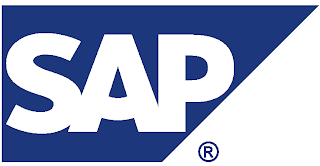
SMEs appear to remain unconvinced that they should consider Cloud and Cloud-Like alternatives.
Independent research, commissioned by Rise, investigated opinions among small businesses towards cloud computing. It found only 42% of small businesses have heard of cloud computing and as many as a quarter (26%) of those who have heard of it, said they don't really know what it is.
Of those who have heard of Cloud Computing, 26% said they are skeptical about its benefits and only 4% of small businesses said they use Cloud Computing and are happy with it.
The hype around Cloud Computing could be the issue in terms of assuring SMEs of the true benefits that they could potentially yield.
What is cloud computing and why should SMEs be interested?
“
Cloud computing means that instead of all the computer hardware and software you're using sitting on your desktop, or somewhere inside your company's network, it's provided for you as a service by another company and accessed over the Internet, usually in a completely seamless way.”Chris Woodford, 2009Here are some of the cited advantages from a number of sources.
Lowered Costs – Cloud Computing offers tremendous advantages to small and medium size business in terms of reduced costs. You pay for what you use.
Greater level of security - Cloud computing can be more secure than traditional IT. It's all about economies of scale - many established cloud suppliers employ leading security experts, invest vast amounts of money into securing their applications and develop technology beyond the means of any small business.
Scalable Storage Options – You can scale your companies storage needs seamlessly rather than having to go out and purchase expensive hardware.
Automatic Updates – There is no need for IT to worry about paying for future updates in terms of software and hardware.
Remote Access – Employees can access information wherever they are, rather than having to remain stationary much of the time.
Green Computing - Cloud Computing uses less energy than traditional data centers which is important to many in this day and age.
Ease of Implementation – Without the need for implementation of hardware and various other components which can take several hours. You can be running your business in almost as much time as it takes to setup a facebook account.
Skilled Vendors - Would you rather these guys manage and protect your data – Microsoft, Google, IBM, Yahoo, Sales Force and Amazon or an incompetent over paid IT staff?
Response time – Cloud computing accomplishes a better response time in most cases than your standard server hardware.
Even playing field for small startups – This allows small companies to compete more effectively with some of the larger businesses. This balances the playing field.
A more collaborative way of working - Using cloud computing applications, people can work more closely together, accessing and working in the same documents in real time - without the need for hundreds of emails with attachments.
Performance and Durability - Run your websites and saas applications at a much faster rate with the benefits of using a much more durable service.
Improve Customer Satisfaction and Sales - Cloud computing offers opportunities for businesses to take full advantage of the latest user-friendly marketing and sales tools available on the Web with the hassles and pains of software installations and maintenance.













.jpg)